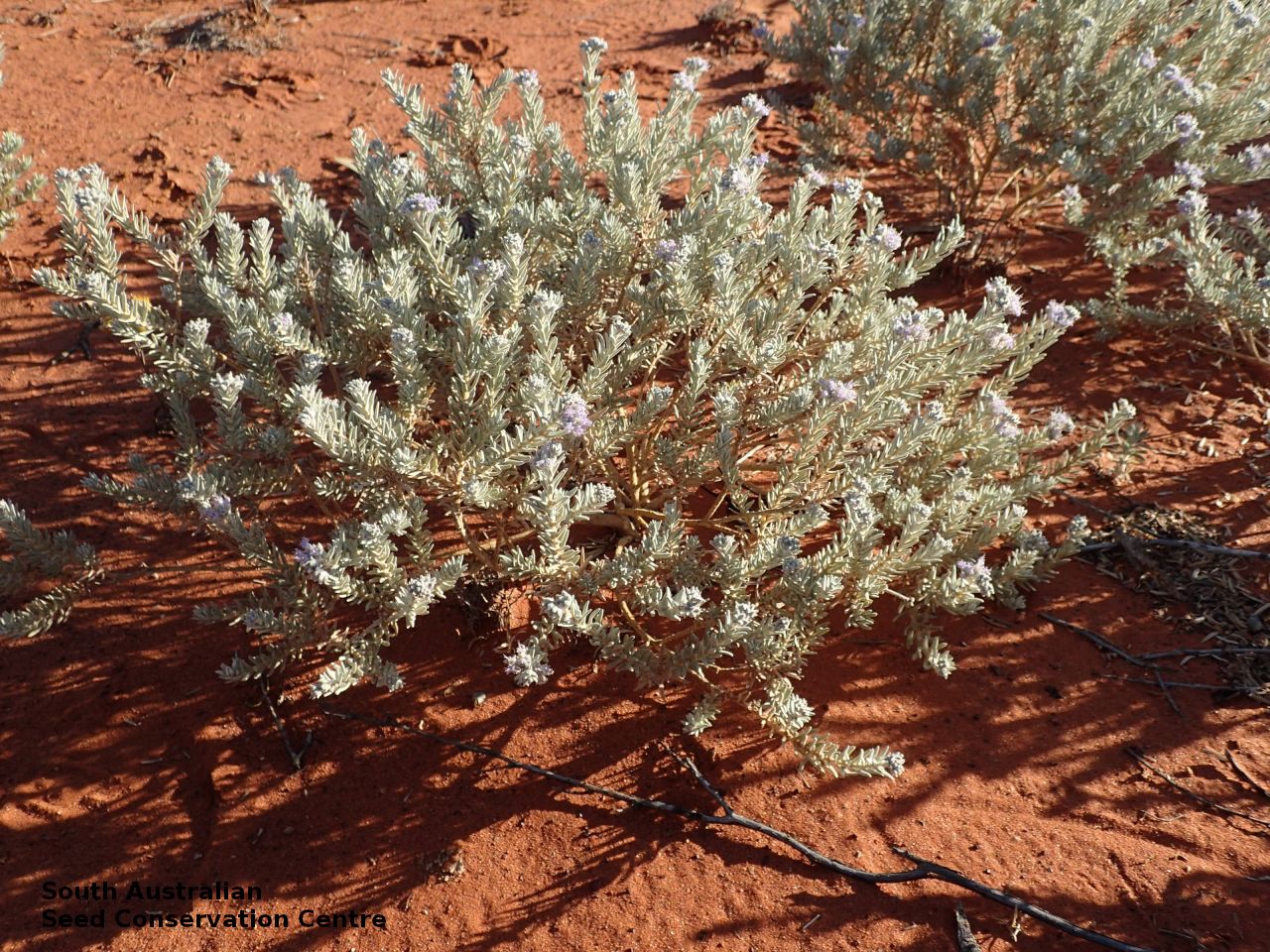
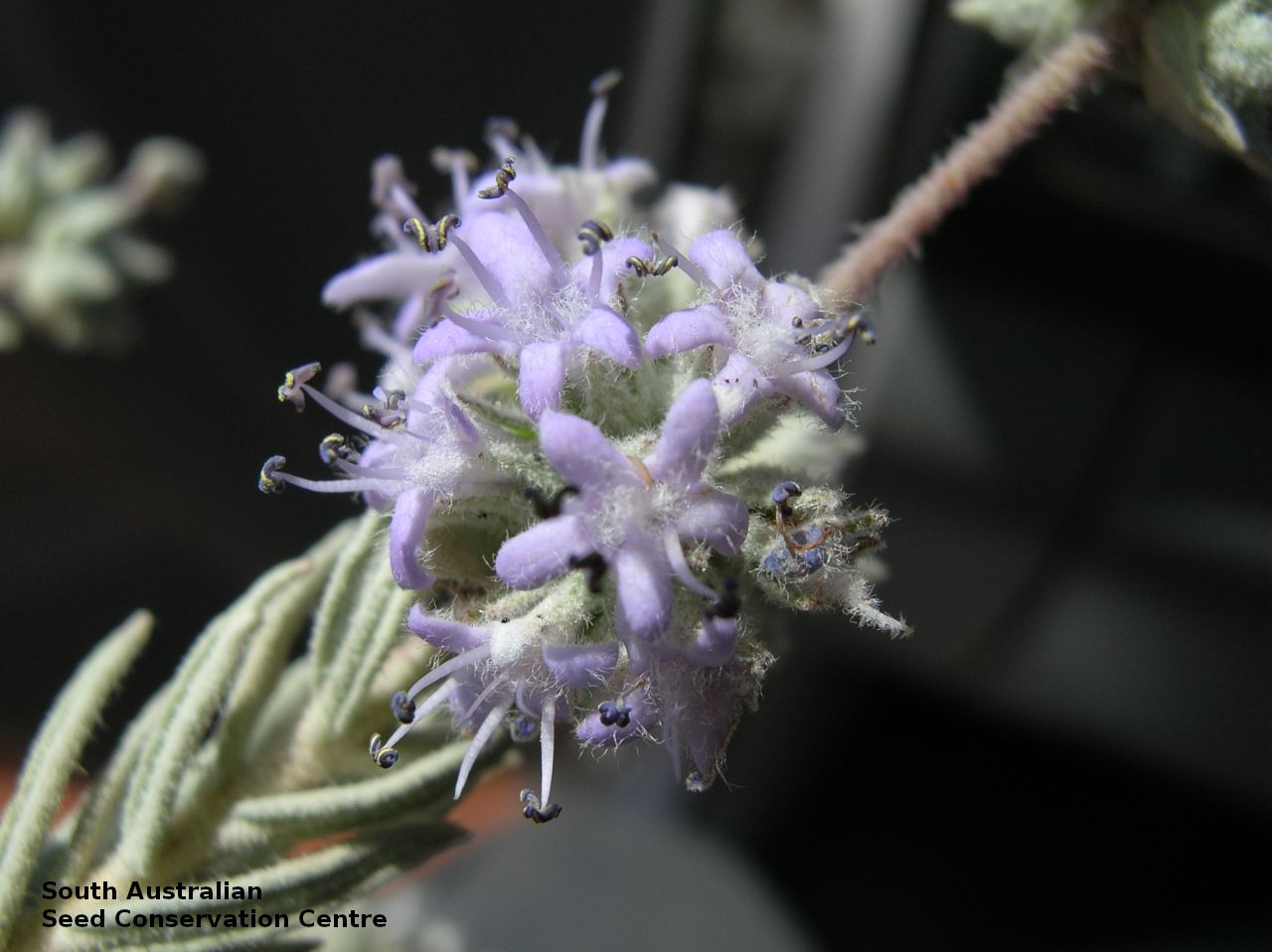
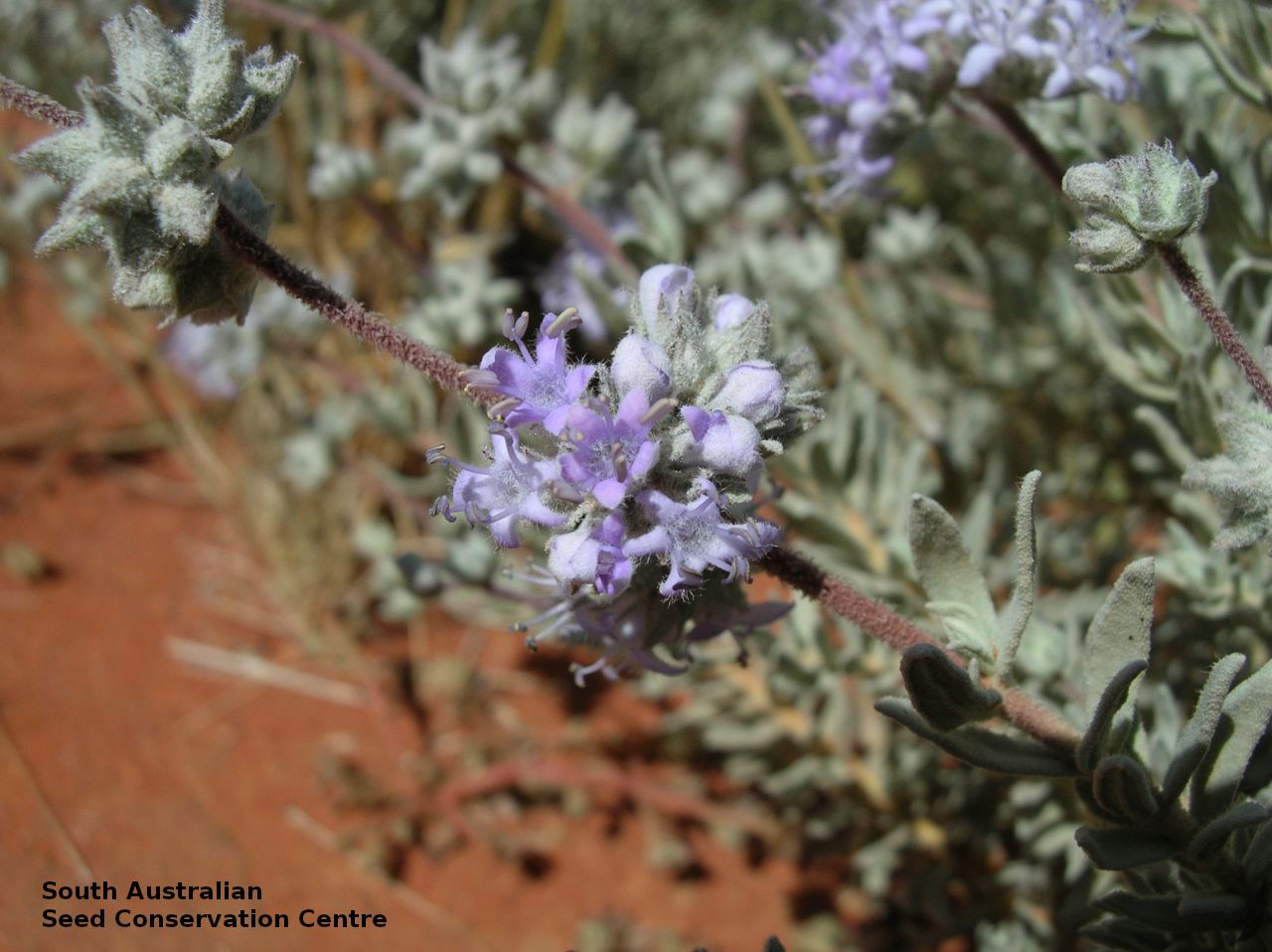
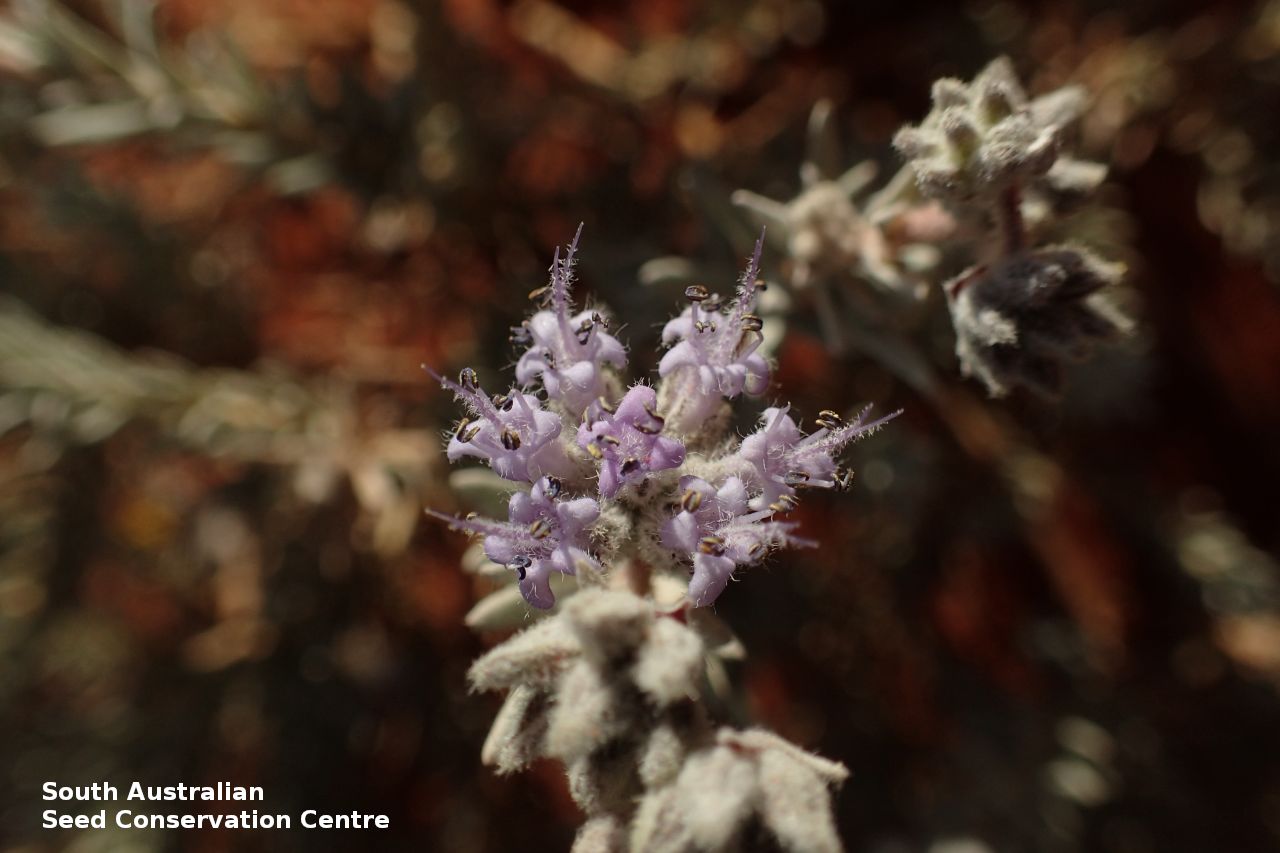

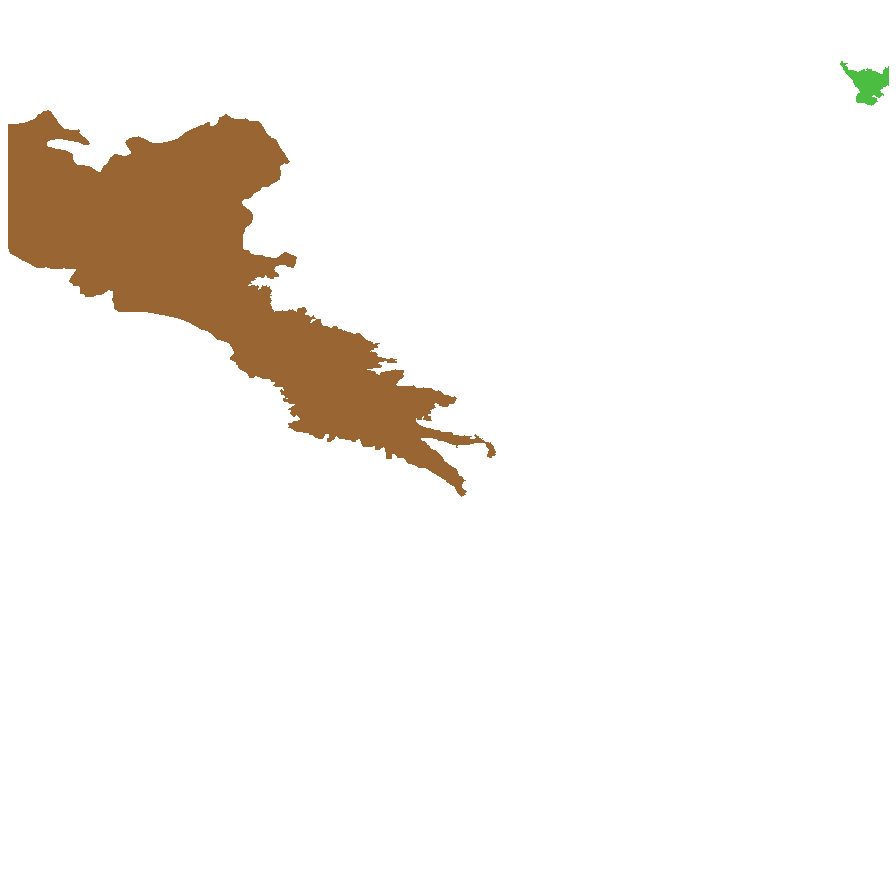
Botanical art
Prior names
Dicrastylis weddii
Chloanthes lewellinii
Etymology
Dicrastylis from the Greek 'dicroos' meaning forked and 'stylos' meaning a style, alluding to the deeply 2-branched style. Lewellinii named after Madeline Mary Ravenna Lewellin (1854 - 1944), fungal artist and plant collector for Mueller in Victoria.
Distribution and status
Found scattered in the far north-eastern corner and the western side of South Australia growing on red sand. Also found in Western Australia, Northern Territory, Queensland and New South Wales. Native. Uncommon in South Australia. Rare in Western Australia and New South Wales. Common in the other States.
Herbarium regions: North Western, Lake Eyre, Nullarbor, Gairdner-Torrens
NRM regions: Alinytjara Wilurara, South Australian Arid Lands
AVH map: SA distribution map (external link)
Plant description
Shrub to 60 cm tall with stem branching near the base and covered in greyish hairs; basal old stem becoming less hairy. Leaves sessile in whorls of 3 sub-opposite, linear or linear-lanceolate, with recurved margins, to 2.5 cm long and 6 mm wide covered in greyish hairs. Flower-spike with purple sub-globose flowers in clusters at tipd of stems. Flowering between September and December.
Seed collection and propagation
Collect seeds between December and February. Collect mature fruits that are white and spongy. May need to collect a lot as most will not have any viable seeds. Place the fruit in a tray and leave to dry for 1 to 2 weeks. Then rub the dried fruits with a rubber bung to dislodge the seeds. Use a sieve to separate any unwanted material. Store the seeds with a desiccant such as dried silica beads or dry rice, in an air tight container in a cool and dry place.